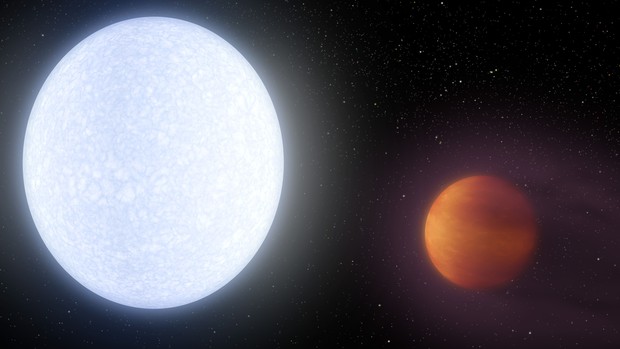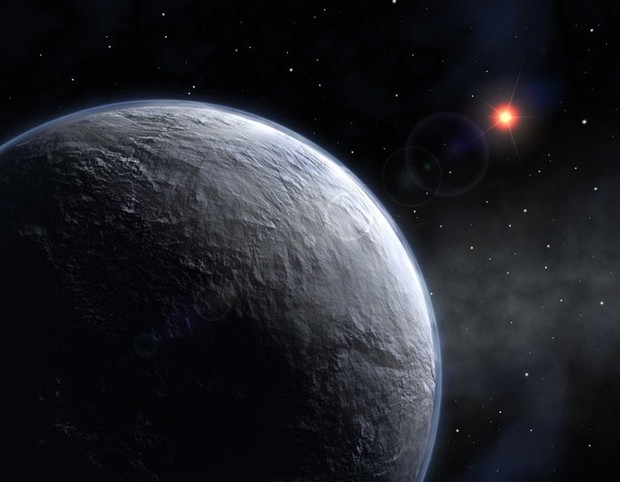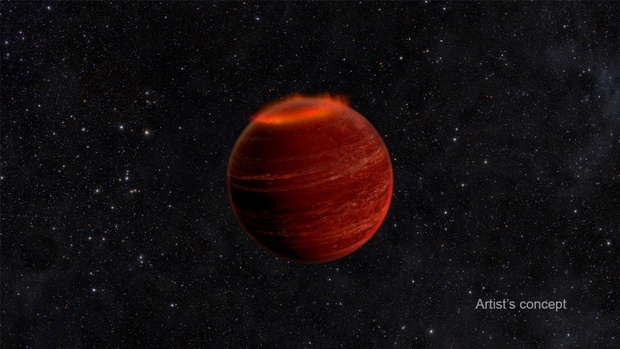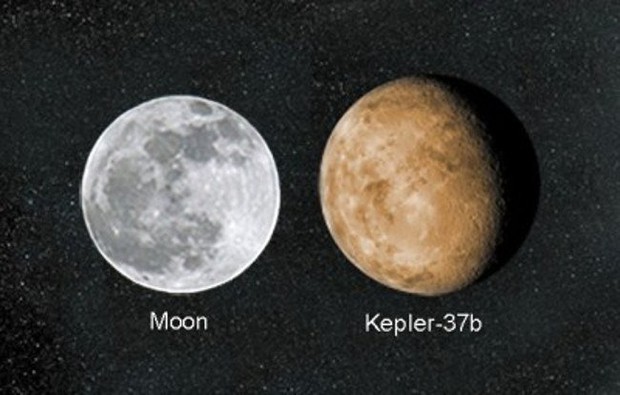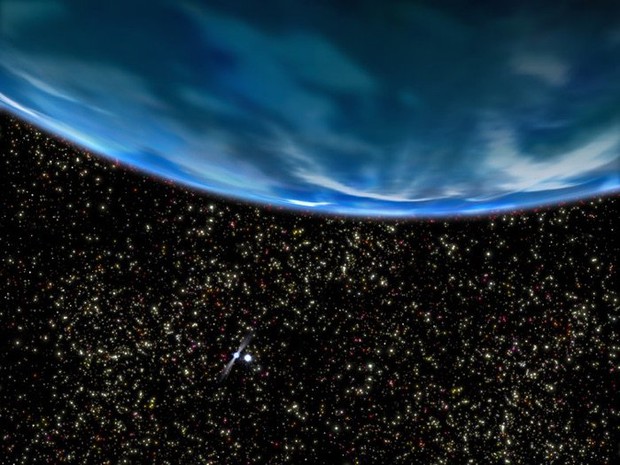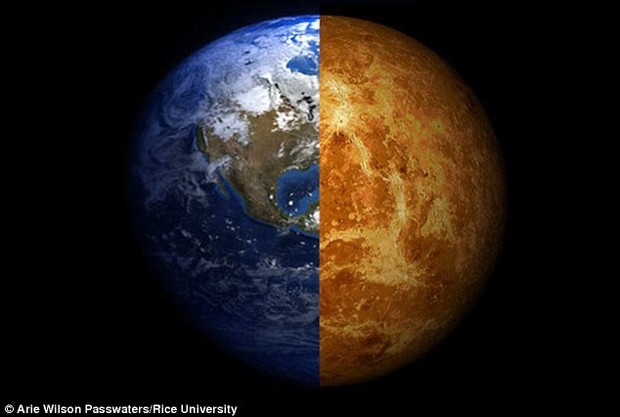Each planet retains its own special trait, surpassing all the rest of the universe.
The earth is still “unique” in terms of its ability to nourish life. And that’s also why our planet is the most special in the whole universe.
However, it is not just the Earth that is special. With billions of planets in the vast galaxy, many also exhibit remarkable differences from others.
1. The hottest planet in the universe:
In the solar system, Mercury is the closest orbit to the Sun, so it’s no surprise that the planet’s surface temperature can reach 430 degrees Celsius.
The Sun itself has a temperature of around 5,500 degrees Celsius. However, have you ever thought of a planet having almost the same temperature as a star? Come to the star system – the star planet KELT-9 (or HD 195689) is 615 light years away from us.
KELT – 9b is a hotter planet than many red dwarfs
KELT-9 is a giant star, with a mass 2.5 times that of the Sun and a surface temperature of up to 10,000 degrees Celsius.
The problem is that one of the planets circling around it, KELT-9b, orbits even closer than Mercury to the Sun.
It is estimated that Mercury takes 88 days to circle the Sun, while the KELT-9b cycle is only … one and a half days.
This is also the reason why this planet is named “the hottest in the universe”, with an average surface temperature of around 4,300 degrees Celsius, which is no different from a small star.
2. The coldest planet in the universe
With temperatures of about 50 degrees C above “absolute zero” (0 degrees K or -273 degrees C), OGLE-2005-BLG-390Lb was recently confirmed as the coldest planet in the universe. now.
The planet has a mass 5.5 times that of Earth and is not too far from its host star (roughly equivalent to the distance between Jupiter and the Sun). The only problem is that it orbits a red dwarf star of too low mass.
OGLE-2005-BLG-390Lb is the coldest planet in the universe
At these temperatures, the planet doesn’t even have an atmosphere, as the gases have frozen, creating layers of permafrost on the planet’s surface.
3. The largest planet in the universe
Stars differ from planets in that they have extremely massive masses, with a gravitational force strong enough to trigger fusion.
But between the stars and the planets, there is another type of planet. They are stars large enough to initiate fusion, but not large enough to sustain. These are known as brown dwarfs.
Brown dwarfs are stars much larger than planets, but much smaller than regular stars.
For example, the planet DENIS-P J082303.1-491201 b, it has a mass 28.5 times greater than Jupiter, and is the largest planet ever found by NASA.
On the one hand, it was so large that NASA and many other scientists must have wondered what it should be classified as: a planet like Jupiter or a brown dwarf.
4. The smallest planet in the universe
Larger than the Moon and smaller than Mercury, it is Kepler-37b – the “tiny” planet in the universe.
The size is only slightly larger than the Moon
The planet has an extremely hot surface temperature because its orbit around its host star is even closer than Mercury is to the Sun.
5. The “Old One” of the universe …
According to many estimated theories, the universe formed 13.8 billion years ago. Yet the planet PSR B1620-26 b is … 12.7 billion years old, and this made the “old” the oldest planet in the universe.
“Instrument” PSR B1620-26 b is a gas giant, with a mass 2.5 times that of Jupiter, orbiting 2 host stars, including a neutron star.
But “born” too early also suffers. When formed too early, it seems that planets devoid of the necessary elements for life appear.
6. … and “young shoots” of galaxies
The youngest universe V830 Tauri on the star planet was formed about 2 million years ago. This number is very long for a human lifetime, but compared to the universe, it is no different than the blink of an eye.
The host star of this system only has the mass of the Sun but has a radius of 2 times, which still needs more time to complete. Meanwhile, the planet has a mass of three-quarters of Jupiter, and appears to continue to be “bigger”.
7. Place with the harshest climate
This time the throne belongs to a planet in our own solar system: Venus!
Venus is inherently the size of Earth, but the air is filled with sulfuric acid. Here, the atmosphere is moving faster than the rotational speed of the planet itself, so there is no wind. Instead, the usual picture on Venus is that of hurricanes with speeds of up to 360 km / h.
Additionally, Venus’ atmosphere is about 100 times thicker than Earth, but 95% is CO2. This creates a terrible greenhouse effect, causing the planet’s surface temperature to reach 462 degrees Celsius – which is hotter than Mercury even though it is not close to the Sun.
However, it’s also important to know that Venus is unlikely to have the most extreme climate in the universe. It’s just that the exoplanets (extrasolar planets) are located too far away, so we can’t observe the climate there.



